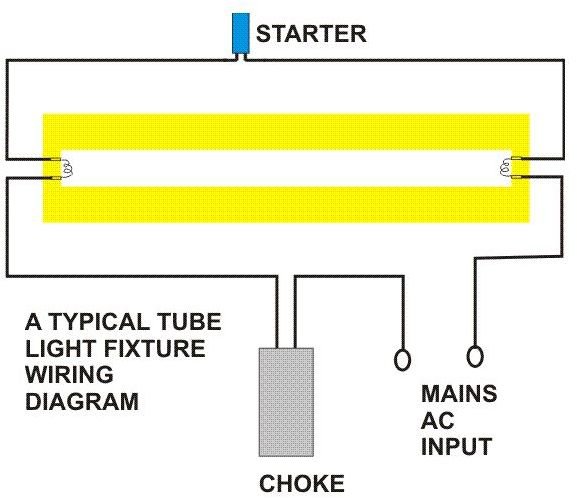Find great deals on eBay for fluorescent choke and fluorescent ballast. Fluorescent Switch Start Chokes. A fluorescent lamp or fluorescent tube is a gas-discharge lamp that uses electricity to excite mercury vapor. The excited mercury atoms produce short-wave ultraviolet light that then causes a. I have, however, seen a very cheap fluorescent light fixture that used resistance wire instead of a choke.
The choke has a secondary function if the tube has a starter. This looks like a small metal can and contains a small neon tube in which one of the electrodes is a bimetal thermal switch. What is the importance of starter and choke in. This superior quality Ballast and Choke is widely.
Here is one example of a tube light fixture consisting of a large heavy square “ choke or “ballast and a small cylindrical “starter. Special lamps were manufactured that were rated at 1volts and 1watts. The lamp had a thermal starter built into the pin base.

The power requirements were much larger than using an inductive ballast (though the consumed current was the same), but the warmer light from the. This Watt Switch Start Ballast from Tridonic Lighting is a non-dimmable magnetic choke offering an impressive 100hour life alongside low power consumption. Suitable for Pin 2D compact fluorescent lamps this gear requires a capacitor and igniter to operate. Choose From Close To 30Designs.
Securely Checkout In Seconds. A fluorescent light does not have the usual glowing filament of an incandescent bulb, but instead contains a mercury vapor that gives off ultraviolet light when ionized. Therefore it has lower energy than the absorbed radiation. This video explains the theory of how a fluorescent lamp starts and how to connect. This will enable you to troubleshoot lamp issues on about two-thirds of all tanning beds.

John Anderson advances the fluorescent lamp by improving the electrodes, inventing a dimmable fluorescent lamp The Bright Stik: The Bright Stik is a type of fluorescent that was developed by John H. Harnden at General Electric. This video will demonstrate how to replace Tfluorescent light tubes with single-ended LED replacement bulbs. Replace the ballast cover on the fluorescent light fixture.
Install the fluorescent bulbs, replace the lens cover and turn the power back on to the fixture at the circuit panel. Guaranteed UK Next Day Delivery! Over Years In Business. Extensive Inventory Available.
Tfluorescent tubes can be installed to efficiently light everything from aquariums (specialist tube) to factories, schools, offices, supermarkets, and even underground railways. They’re a cost effective way of lighting large spaces because they typically last up to 30hours and have low mercury content, ensuring that they have a minimal environmental impact. Free delivery on eligible orders!
Magnetic choke (magnetic ballast) functions are to limit the current in the starter during bimetallic contact shorting, provides the high voltage across tube light in. Turn off the light at the switch and turn off the power supply to the light via the circuit breaker. Remove the tube from the fixture, as the ballast is usually found behind the bulb or between the bulbs in a fitting with more than one tube. Why does a ballast ( choke ) produce such high voltage in a fluorescent light filament? And also, what is the proper purpose of attaching a starter?
If you are troubleshooting a 4-tube fluorescent fixture, this is easy! Just remove one of the still-working pair of fluorescent tubes and replace it with each of the questionable tubes, one at a time. To safely replace the ballast in your fluorescent light , turn off the lamp, remove it, and check the voltage of the feed wires with a voltmeter. Then, use a nut driver to unscrew the nut holding the ballast in place and install the replacement ballast.
Insert the re blue, black and white wires in their corresponding holes, screw the nut back in place and replace the lamp. LED light bulbs are proving a popular choice around the home, with a much longer lifespan than traditional incandescent bulbs.
No comments:
Post a Comment
Note: only a member of this blog may post a comment.